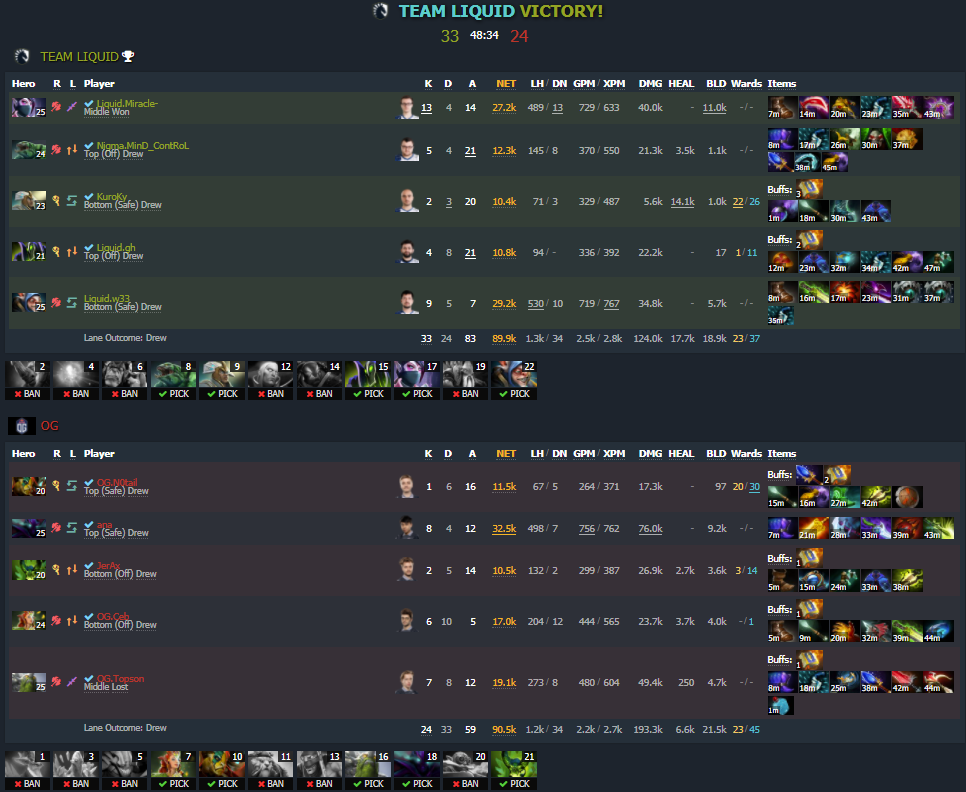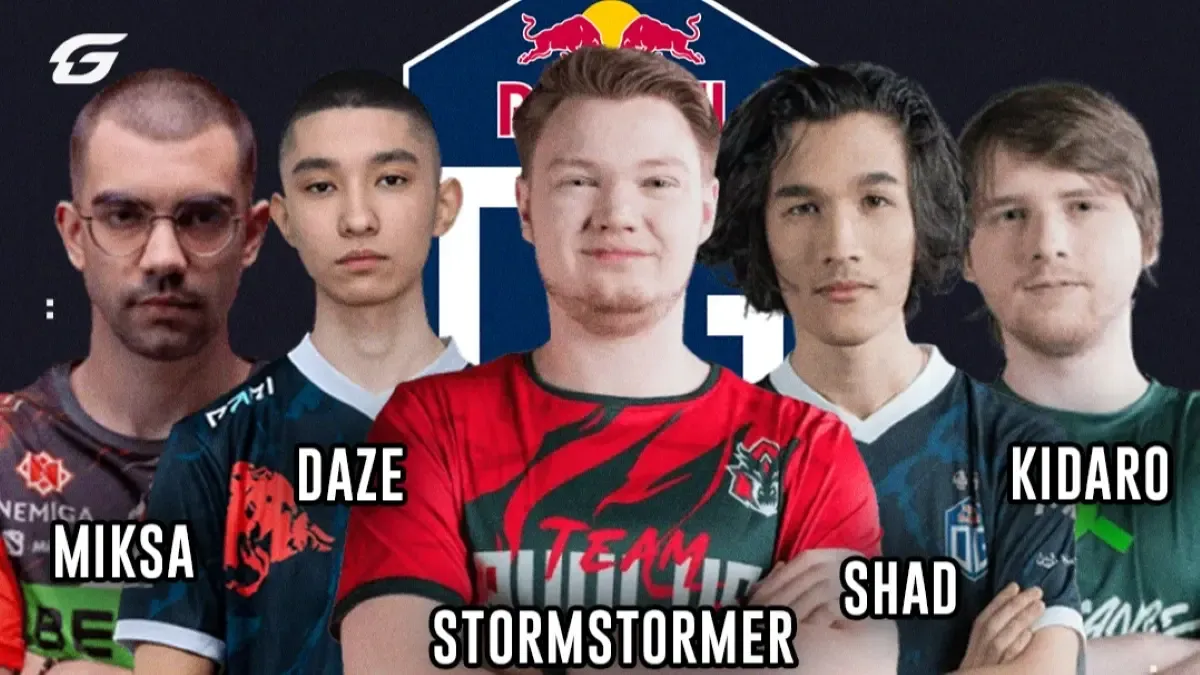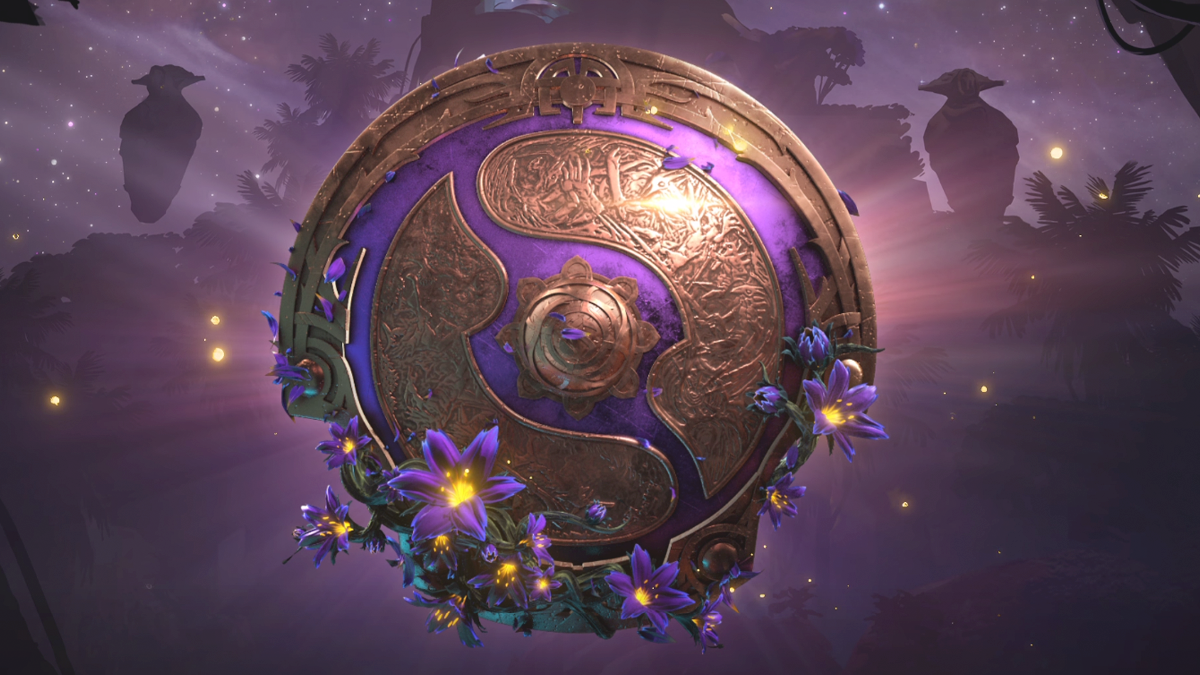During the weeks leading up to TI10, GosuGamers will be taking a closer look back at the meta for each of The Internationals through the years. This week is TI9.
It has been a long journey, looking at all the metas that embraced the previous iterations of The International championships, starting with TI1, and we are finally at the last stop. It has been two years since the Dota 2 community were treated to some insane TI plays, and as we move closer to TI10, it is only fitting that the TI9 triumphs of the most successful team in TI history is what we take a look at.
TI8 was held at the Mercedes-Benz Arena in Shanghai. It was the first time The International had moved to the East, and it gave the Chinese teams an unprecedented home advantage. The prize pool for the tournament, thanks to the TI9 Battle Pass, had gone up to over $34.3 million from nearly $25.5 million from the previous year. The winners of TI9 were destined to get a slightly higher percentage as compared to the winners of TI8 – 45.5% (up from 44%), which came out to be a little over $15.6 million.
Format
The format for TI9 was pretty much the same as TI8. There were a total of 16 teams-
● 12 invited based on the Dota Pro Circuit (DPC) rankings
● 6 qualified (one team from each of the six regions)
The two groups had 9 teams each, with every team playing a best-of-2 against every other team in their group. The top four teams went to the upper bracket, while teams 5 to 8 went to the lower bracket. The last team from each group was eliminated. This was the same format from TI7 to TI9, and it seems will continue to be the same at TI10.
OG, the TI8 champions, had a very average year, especially with their talismanic carry ana taking a break in the first half of the Dota 2 year. They managed to scrape a direct invite in the last DPC Major of the year. Team Liquid’s year had been better, ending up as runners-up in the final two DPC Majors. However, after over three years playing together, the team had decided to make a roster change, brining in w33haa in place of Lasse “MATUMBAMAN” Urpalainen.
At TI9, OG took on a form which had only been seen from them at the playoffs of TI8. Without dropping a series, the TI8 champions managed to top their group. It was a very difficult story for Team Liquid, ending 7th in their group after a series of dismal performances and only two series wins out of eight.
OG, starting from the upper bracket, fought their way through to the grand finals of TI9, in a somewhat unexpected fashion. History repeated itself in the upper bracket finals, when they took on PSG.LGD, the team that come across their path in the TI8 upper bracket finals and TI9 grand finals. It seemed like there would be a repeat of the TI8 grand finals, but Team Liquid, traveling from the first round of the lower bracket, after a bo1 win over Fnatic, rose in prominence as the tournament advanced, and ended up eliminating PSG.LGD in the lower bracket final to set up a grand final clash with OG.
Both the TI9 grand finalists had won The International before, so after nine long years, there was bound to be a not just repeat winners in terms of players, but also a second win for an organization. Of the finalists, only w33haa had not won a TI, but this would be his second TI grand final, having made it to the podium with Digital Chaos at TI6, where they lost to Wings Gaming in the grand finals.
OG Roster
Anathan “ana” Pham
Topias Miikka "Topson" Taavitsainen
Sebastian “Ceb” Debs
Jesse “JerAx” Vainikka
Johan "N0tail" Sundstein
Team Liquid Roster
Amer "Miracle-" Al-Barkawi
Aliwi “w33haa” Omar
Ivan Borislavov "MinD_ContRoL" Ivanov
Maroun "GH" Merhej
Kuro "KuroKy" Salehi Takhasomi
General changes
After going through the two week patch system the previous year, the 2018-2019 season saw a few changes in the patches. TI8 was played on Dota 2 patch 7.19, and TI9 only went three patches ahead to Dota 2 patch 7.22f (three major patches). Let’s take a look at the general changes in that period that would have the biggest impact on the game.
● Middle lane no longer has an additional melee creep
● Buyback respawn time penalty changed from +25% of remaining time to +25s always
● Glyph is now on cooldown until the 3 minute timer in-game
● Denies no longer give the denier 25% XP
● Creep denies now give the denier 20% of the gold bounty
▪ Melee Creeps: 7-8 gold
▪ Ranged Creeps: 9-11 gold
● Added a new dedicated inventory slot to hold Town Portal Scrolls
▪ You still must purchase Town Portal Scrolls from shops as usual
● Boots of Travel: No longer shares cooldown with Town Portal Scrolls
▪ Upon teleporting, +10 seconds are now added to your Town Portal Scroll cooldown
● Stacked Neutral creeps now give the stacker 35% of the bounty instead of 25%
● Day/Night cycle increased from 4 minutes to 5 minutes
● Scan no longer ignores units in the Roshan pit
● Added a new game state, Leashed
▪ Leashed units follow the same rules as rooted units with regards to teleport and mobility based abilities, but can still use normal movement
● Replaced the primary jungle ancient camps with big camps
● Added new Aghanim's Scepter upgrades for all of the 24 remaining heroes without an upgrade
● Scepter can now be consumed as a buff by purchasing an 1800 gold recipe upgrade
● Scepter buffs do not grant secondary stat bonuses
● Roshan now drops a consumable Scepter buff item
▪ The third Roshan will randomly drop either a consumable Scepter item or a Refresher Shard
▪ The fourth Roshan has both
The meta going into TI9 was quite different as compared to the one from TI8. Besides the general changes, there were changes to the gold and experience formulas as well, as well as the map, ensuring the kind of Dota 2 seen at TI9 would be quite different.
The weird thing in terms of hero picks was the fact that it was all jumbled up. A total of 114 heroes were picked at TI9, showing that there was diversity in the hero picks. Grimstroke and Mars were new to Captains Mode and made their first appearance at The International Championships. Carry Io was a strong concept, and although OG brought it up in the group stages of TI9, it quickly gained traction and became one of the most banned heroes in the carry position. At the same time, Invoker was being played as a position 4 hero, so for someone watching the game after a while, it could have been a doozy!
The laning stage at TI9 was not as important as it had been at TI8. The 70% XP denied was no longer a thing and the denying team did not get any XP from the denied creeps, making it slightly easier for heroes with the worst lane matchups. Instead of lanes, stacking gained a lot of prominence with the stacker getting 35% bonus gold. The number of early game stacks had a massive impact on the game, and it showed as the top teams at TI9 had a lot of stacks per game.
Roshan gained more importance as compared to before as the third Roshan started dropping either a Refresher Shard or consumable Aghanim’s Scepter along with the Aegis and Cheese.
The ban and pick phases for Captains Mode going into TI9 were the same as those for TI8. Three initial bans prevented a lot of the overpowered meta heroes from getting through; but a lot of heroes were viable, leading to varied bans in all phases.

A few things to take note of before we jump into the games-
● Alchemist, Magnus and Leshrac were banned in all four games of the TI9 grand finals. It was a meta where teams made a plethora of stacks, and all these heroes either easily took or facilitated the quick taking of neutral camp stacks.
● Io was banned in the first three games, but made it through in the last game. Io also farmed stacks quite fast, and because of his Aghanim’s Scepter upgrade and talent which gave his Spirits additional damage, was a strong position 1 hero.
● Topson and Jerax had a very interchangeable hero pool. Both players played Pugna and Tiny in the grand finals, and the flexibility kept their opponents guessing on where a hero in the draft would go.
● Like TI8, OG were more than willing to deviate from the meta. Pugna got picked only 7 times at TI9, twice of which was in the grand finals by OG. Similarly, One of Monkey King’s 6 picks was in the grand finals by OG. Topson played both the heroes.
All images of game details are taken from Dotabuff.
Game 1 (Team Liquid Radiant, OG Dire with first pick)

Game 1 was the only close game as such in the TI9 grand finals. Liquid caught OG off guard with a Meepo pick despite having picked Templar Assassin, and they dominated the game for nearly 40 minutes, only to have ana’s farmed Spectre pull it back in OG’s favor. But one good team fight from Liquid and a questionable hold on the buyback by ana gave Liquid the first game.
In terms of the meta, the game was an indication that even with the gold and experience formulas, comebacks were a possibility.

Game 2 (Team Liquid Radiant with first pick, OG Dire)

Game 2 and game 3 were quite like turbo games. OG picked heroes that could fight from early on in the game and just chased Liquid all over the map. They even dove the mid tower in the 14th minute to get a kill on Tidehunter when all outer towers, all 12 of them (both teams) were still standing. It is difficult to put a label on the meta through OG games because of all the crazy, unexpected things they pulled off.
Game 3 (Team Liquid Radiant with first pick, OG Dire)

Game 3 was a repeat of game 2, but in a much worse fashion. The run-at-the-enemy Dota 2 continued from OG, and Topson got himself an ultra kill before the 15 minute mark. Before this Pugna game, the hero had one win in six games at TI9. But that didn’t stop OG from picking it and Topson from absolutely annihilating Liquid.
One of the best combos to come out of this OG draft was Pugna’s Decrifipy with Grimstroke’s Phantom Embrace. Unless a hero had Manta Style, Eul’s Scepter or Lotus Orb, there was nothing they could do about the silence. It was especially agonizing for a hero like Juggernaut, who could neither attack nor get the silence off, even though he has a spell with a basic dispel.
Game 4 (OG Radiant with first pick, Team Liquid Dire)

Team Liquid realized they needed to match OG’s aggression and went for early fighting heroes themselves. While this game did start off a lot better for Liquid, they did leave the Io for OG to pick, and it was just a question of when Io got his Aghanim’s Scepter and level 15 talent. After that, the game turned in the blink of an eye.
Topson built a Diffusal Blade on his mid Gyrocopter, something that had been done in less than five games on the 7.22 patch. But with the Io overcharge and the insane attack speed resulting from it, he was able to deplete all of Bristleback’s mana, rendering him useless in the fights. This was not meta, and it was a risky move to invest around 3000 gold for your first item on something that was unproven. But that is exactly the definition of OG! That team did not have any fears and they played to their instincts, which was what made them so strong.
Team GPMs
The team GPMs per game for the two teams throughout the series were:
OG: 2294
Team Liquid: 1809
The GPMs for both teams were quite high, much like what we are used to seeing in today’s games. There was a steady rise in the average team GPMs throughout the years, and by TI8 and TI9, it had hit the levels we are used to seeing.
That brings us to the end of our journey of looking at the metas for all the iterations of The International championships before TI10. Starting from TI1, the professional side of Dota 2 has come a long way in terms of streamlining roles and making the most out of what is available. When TI10 begins on the 7th of October in Bucharest, Romania, we can expect to see some insane Dota 2 being played in the quest for the next Aegis.











